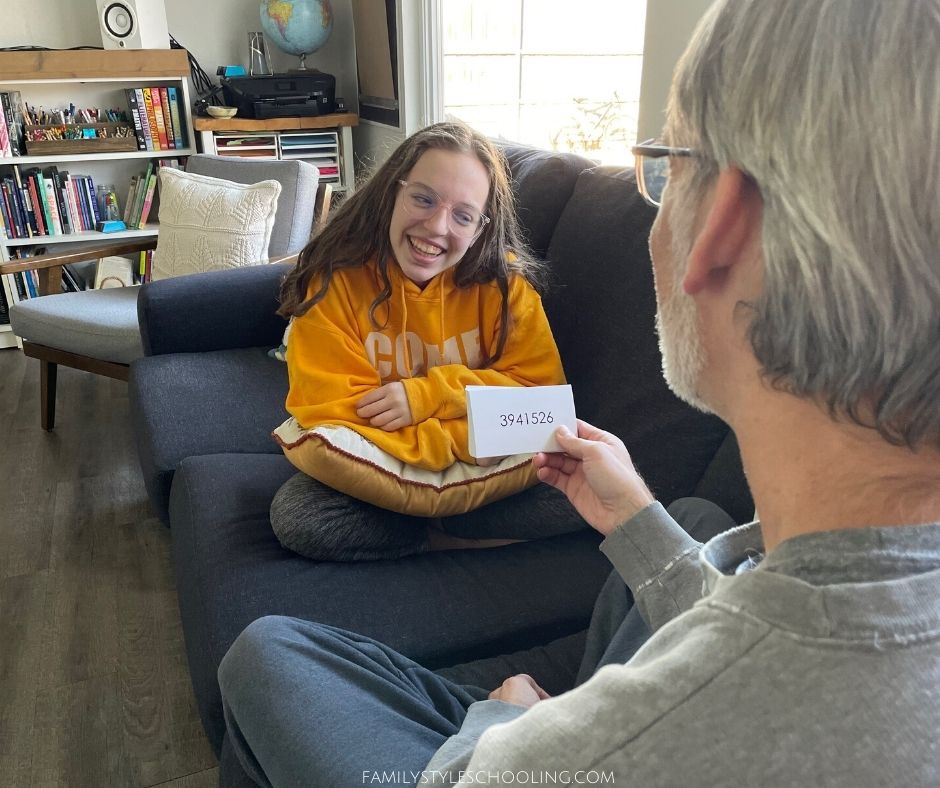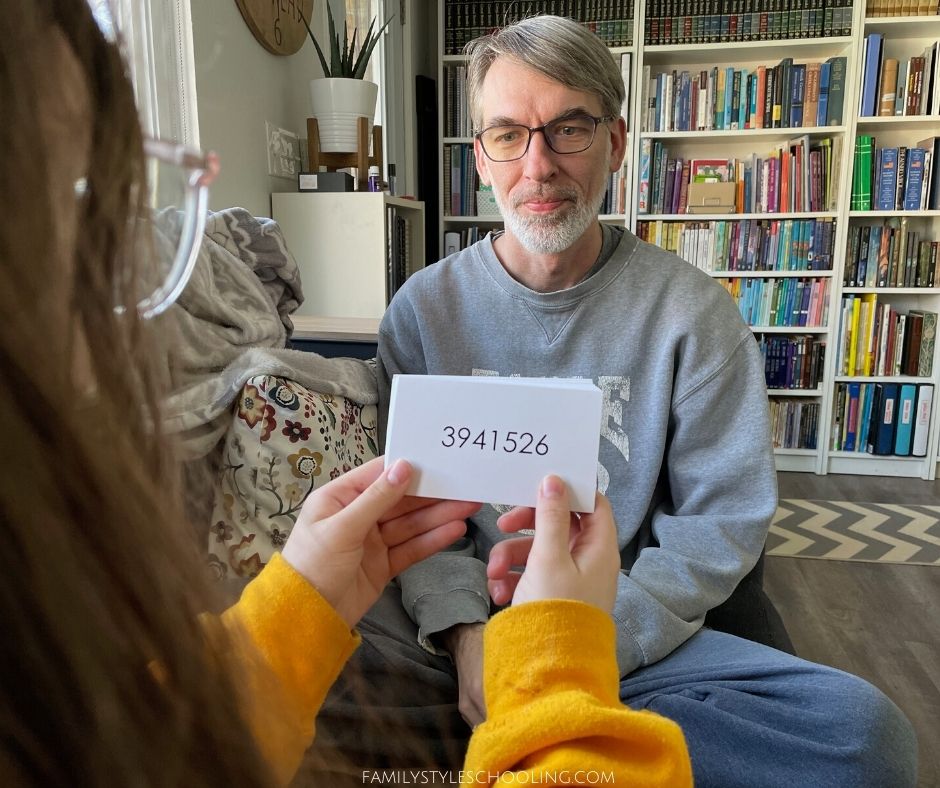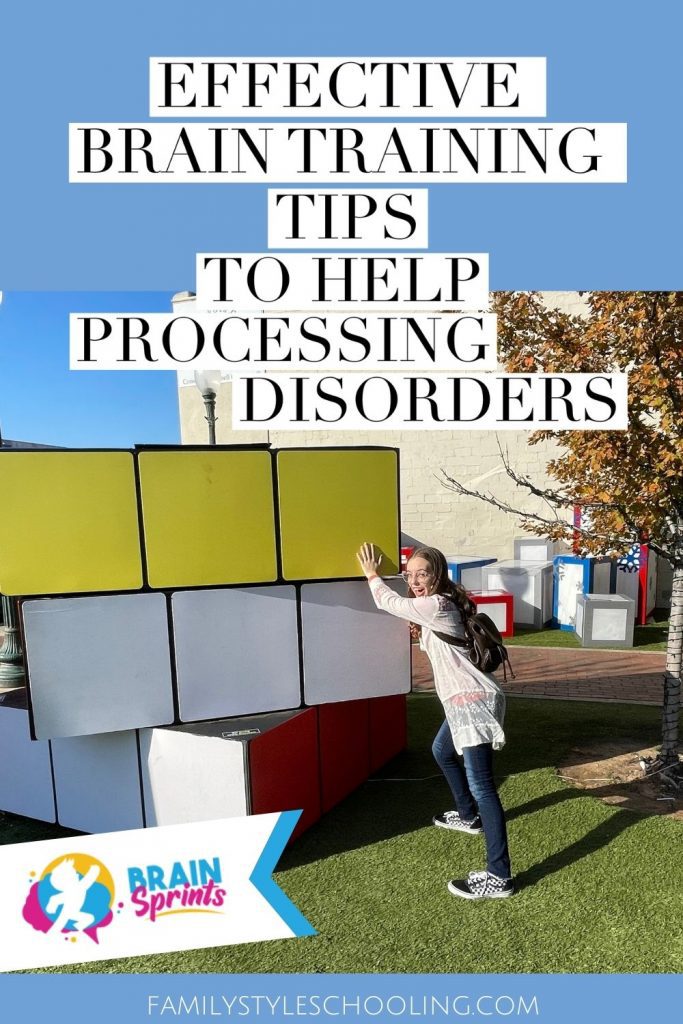Effective Brain Training Tips from Brain Sprints to Help Processing Disorders
Over the last two days, I’ve been sharing my journey with Brain Sprints as I worked with my daughter through a NeuroDevelopmental approach to her learning challenges. Honestly, I didn’t even know this existed. This isn't a sponsored post, just us sharing our experience so that others can get help like we did!
I have a lot to say, so this will be a week-long adventure sharing the physical, mental, and spiritual aspects of our plan as well as practical ways that we organized our materials to stay motivated to keep working on the plan! So check back each day for more!
I first heard of Brain Sprints through the Little Giant Steps booth at the Great Homeschool Convention. By the time I was attending those conventions, I had made up my mind to only listen to the speakers who wrote the curriculum I was already using. I can be a sucker for a “really great new idea” when I stroll through those curriculum booths.
So when I noticed “Little Giant Steps,” I assumed it was targeted at preschool or early childhood development, and my youngest was nine at the time. I could easily skip that booth because it just didn’t apply to me, right?!
Thankfully, I got on their mailing list—maybe for that free giveaway I signed up for—and years later, I got an e-mail from them that caught my eye. WHY DID IT TAKE ME SO LONG?!
Help Needed! Humility Required!
I know why it took me so long: I thought I could do it myself. Have you heard that phrase before? Yeah, it usually comes from your three-year-old. But in reality, after we grow out of the phase of saying it out loud, we generally just shift to the inner voice claiming independence.
So I discovered that Little Giant Steps and Brain Sprints serve all ages while they have a curriculum for young students. It reminded me of something I’ve heard Andrew Pudewa say (which I discovered he was quoting Glenn Doman), “Every child is brain-injured—it’s just a question of location and degree.” Since we’re not neurologically flawless, we all could use a little strengthening. (This podcast on understanding child brain development is excellent by the way).
When my daughter came to me desiring to attend college despite all of the obstacles to learning that she faces, I felt like I needed help to make that happen. At first, I sought out a label until I ran across an email that offered me a different solution: What if you could help your child process information faster?
Yesterday I shared some of the physical training that went into helping my daughter get her brain organized. Today, I will talk about some of the activities we worked on to speed up the ol’ processor.
Learning Challenges Due to Inefficiency in Processing
After reading that email, I ordered the book: It’s All About the Brain! Eradicating Dyslexia, ADD, and Other Learning Challenges by Linda Kane. I read through it quickly and then started reading it aloud to my family.
In the third chapter, Kane outlines the four steps of learning and demonstrates how challenges in each of these can lead to inefficient processing, resulting in frustration in learning. She explains, “Learning consists of four steps: First, the brain receives information. Next, the brain processes the information it has received. Third, after processing, the brain stores the information. Finally, in order for information to be of any benefit, the brain has to use it” (23).
She states that this process is the same for anybody, whether healthy or suffering from some type of brain injury. We all have to receive, process, store, and use the information to learn.
Our NeuroDevelopmental plan targeted these inefficiencies in learning to help my daughter’s processor get up to speed. The physical training I shared yesterday focused on the first step of learning—how the brain receives the information, and the third step—how the brain stores the information. If we can get the input going to the right place and then increase the processing efficiency, it will be easy to utilize whatever is learned.
But Is It All About Efficiency?!
Our American culture tends to place too high of a value on efficiency. But that’s not what this is talking about. Kane clarifies that each level of development has a different capacity for processing information. A two-year-old can process two bits of information “My ball,” a three-year-old, three “I do it,” and so on.
If you sat in on a kindergarten classroom, you might hear the teacher giving short bits of direction, requiring full attention and eye contact: “Get your handwriting books out.” A five-year-old should be able to process five things, so short sentences help.
What happens if a student never progresses past this developmental stage? They get to middle school or high school and get lost when the teacher (or parent) throws out a laundry list of instructions: “Get out your science textbook and turn to page 55. I want you to pay attention to the line graph at the bottom. Complete the questions relating to that graphic, and then we’ll discuss.”
Um…what page did he say?
Flips pages….what were we looking for?
Scans page….what about it?
And the class is already discussing. It isn’t that this student might not have some great thoughts on this topic, but by the time he gets to his ideas, the class is over, and everyone has moved on. He feels like he’s not very smart because his brain was inefficiently processing the basic instructions, which kept him from participating—not that he didn’t understand the material.
Brain Training: Let’s Get Down to Business
I feel like I need a little background music to really set the mood of what comes next. In my imagination, I have Captain Li Shang from Mulan singing, “Let’s get down to business, to strengthen your brain.” Or maybe you’re a little more hardcore, and you hear the Rocky theme song playing, but these games honestly felt like we were serious about brain training and we were getting access to secret superpowers.
Digit Span Cards - Auditory and Visual Processing Game
One of the easiest games on our NeuroDevelopmental plan utilized Digit Span Cards. Basically, you spend two minutes twice a day, either reading off a list of numbers and having your student say them back to you (works on auditory processing), or showing them the card of numbers for three seconds and then hiding it and seeing what they can recall (works on visual processing).

In just four minutes a day, you can strengthen the brain (which is a muscle) and enhance your student’s ability to:
- stay on task
- follow directions
- comprehend what is read and said
- follow conversations
- think conceptually (understanding the big picture and cause and effect)
- use the phonics approach to reading
There is a free test kit to see where your student’s current processing level is and to work from there. Students need to process six bits of information in and out of short-term memory to succeed with phonics and seven for tracking in conversation. If they move up to eight or nine, they’re processing at superior levels.
Kane states, “When an individual can sequence, or hold together, 10 pieces of information, she has the ability to learn instantaneously. Everything she is hearing and seeing processes into short-term memory immediately. As long as her long-term memory is functioning well, she will need to do minimal studying” (30).
We all know people who are functioning at this level. Maybe they just didn’t have any developmental delays that interfered with their learning process, or maybe they’ve just worked their brain into an efficient tool. Although we might not all get to that level, if we could improve our short-term memory in just 4 minutes a day, wouldn’t it be worth it?
Audrey’s Results
I knew that this would be an area where Audrey would need help. If I gave her too many instructions at one time, she would not be able to follow any of them. The assessment validated my observation. She could successfully process four pieces of information. No wonder our school work was taking so long!!

We were spending all of our energy getting on the same page and not ever really getting to the actual learning.
So we started doing some figurative push-ups and sit-ups for the brain with the Digit Span Cards and her brain started to get stronger. In those first four months, she was up to 5 but could do 6 with a little help.
Friends! That is like a year and a half of development in four months. Or if we want to get really technical: 4 minutes a day, 4 days a week, for 4 weeks = 64 minutes…in a little over an hour’s worth of time each month. Could you carve an extra hour a month to work on this?
Jason’s Results
If you remember, I mentioned in the first post that my husband started this program at age 44. This activity was one of the few activities that overlapped between his plan and Audrey’s, and actually why he ended up getting assessed.
We got his hearing checked a couple of years ago because we thought he just wasn’t hearing well when we were talking to him. It turns out that his hearing was just fine, but his auditory processing was not efficient.
When he started seeing Audrey’s game, he wanted to play too. So by his first assessment, he’d already had a month’s worth of practice leveling up his processing.

At his first evaluation, he could process 6 pieces of information—good for reading, not enough for conversation. And that was his greatest struggle. If more than one person was talking at the same time, he’d just self-protect and tune it all out. His brain just couldn’t process it all at once.
When we came back after four months, he was processing 7 easily and 8 with a little help! He had moved into superior function in just four months! That little bit of practice has made such a difference for him in not getting lost in a conversation or feeling overwhelmed in a crowd.
Digit Span Cards Work For Visual Processing Too!
We used these same cards to work on increasing visual processing as well. I would show Audrey one of the number sequences for three seconds, and then she’d have to recall what she saw. We would repeat this process for two minutes.
Audrey improved from being able to recall 5 numbers to 8 numbers, and Jason improved from 6, almost 7, to 9! By increasing their visual processing, they’re opening up doorways to learning that were previously closed to them.
What about Actual School Subjects?
I have told you a lot about all of the activities we’ve tackled over the last year, but I haven’t mentioned any subject-focused work yet. Audrey did get some assigned, but generally, the idea is that if you can get your brain working as it is designed to work, then it will be able to catch up in the subject matter easier.
Reading
We did have a couple of readers that we worked through for comprehension. Then we shifted to reading along with audiobooks. But really, the activities that helped with her reading were the floor exercises and the vision therapies that we did.

As her body became organized, it was as if her brain cleaned up and sorted the information that had been stored in there for the past 15 years and it started to become accessible to her.
In her first evaluation, she was comprehending at an 8th-grade level, and in four months, that score went up to the middle of the 10th grade. She made over two years of progress in such a short time.
Spelling
It has been the same with spelling. She really struggled with spelling, and she’s still working on it with the Phonetic Zoo cards from IEW. However, we’ve noticed that some of her silly spelling errors have gone away.

Math
We worked on math facts with the Rapid Recall Math facts, as well as building a foundation with Visual Circle Math. Then we’ve just applied these principles to our current math curriculum.
I’ve been fascinated to see that while she didn’t make really any “progress” in her math skills, I’ve noticed a definite difference in how we work on math together. She’s working through Mr. D Math’s Geometry class.
I’ve noticed that she’s able to retain and process very challenging concepts like geometric proofs in a way that she never was able to before. She’s also working independently through this work and only coming to me occasionally with her questions.

In all of the subjects, there is definitely new confidence that wasn’t there before. We are turning the corner folks! And it’s exciting to be on this journey with her.
If you think your child could benefit from a NeuroDevelopmental plan, you can schedule a free 15-minute consultation. This was very helpful for me in deciding how I could help Audrey in her journey.
Dr. Jan shares more great info on her YouTube and Rumble channels "Brain Coach Tips."
You can also talk to her in person at the THSC convention this year in Allen and The Woodlands, as well as Teach Them Diligently in Roundrock.
Betsy Strauss is an unexpected homeschooler, mother of three, who is in a relationship with a sweet man for life. She loves reading books, drinking coffee, and learning anything with her kids.



